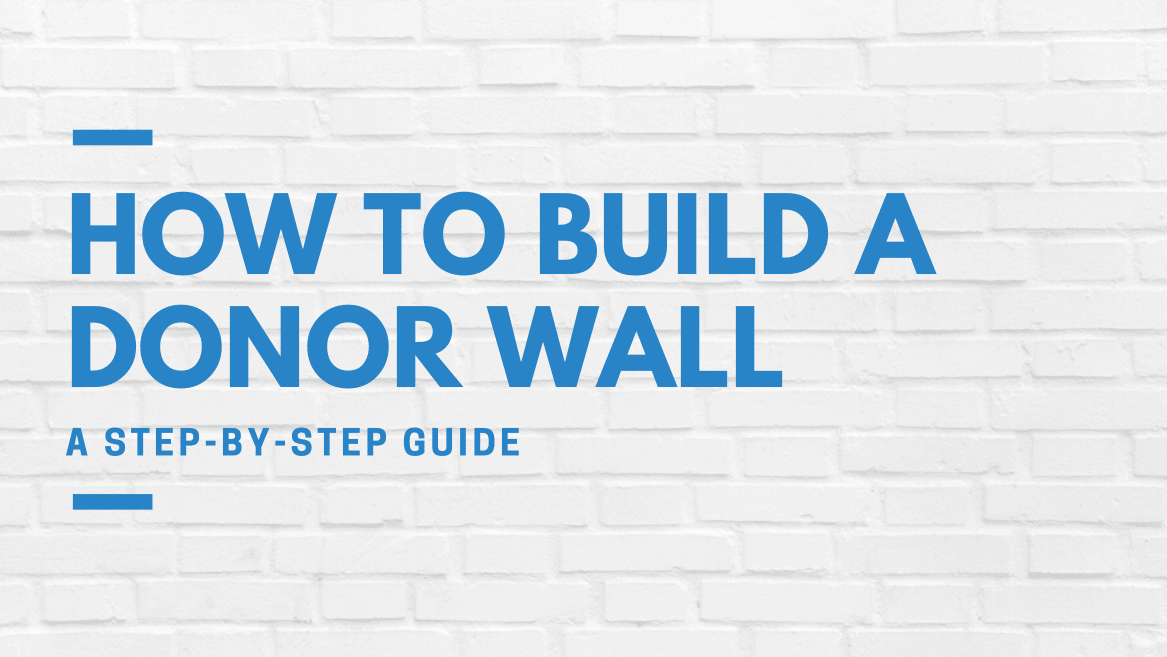Donor recognition matters. While most recognition takes place in private through donation acknowledgment letters, recognizing your donors publicly does a couple of great things. It makes your donors feel even more appreciated while also serving as social proof that encourages others to give. Once a donor sees that your cause has received donations (especially from someone they know), they’re more likely to give – and give more.
A donor wall is a great way to publicly recognize your donors. In this article, we’ll walk you through everything you need to know about donor walls, including how to create one.
What is a Donor Wall?
A donor wall or a donor recognition wall displays the names of all the donors who participated in a particular campaign or a major fundraising effort of a nonprofit organization.
Traditionally, donor recognition walls consist of header lettering with the names of benefactors listed below on engraved brass panels or plaques. Today, however, donor recognition walls can incorporate a variety of styles, materials, and elements.
Donor walls are usually either:
Physical installations: Wall-mounted displays are typically found in a centralized location of a hospital, university, nonprofit organization, school, museum, library, or other institution. These physical donor wall installations can be traditional walls with plaques but also multimedia/digital presentations.
Or
Virtual: Embeddable to online donation campaigns/forms and websites.
Walls are usually permanent installations, and digital walls can be updated more often.
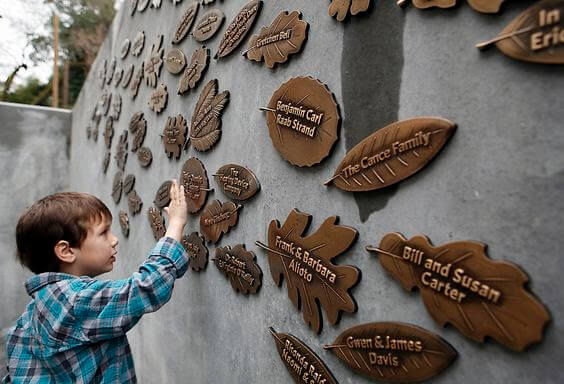
Why Are Donor Walls Important?
Firstly, donor walls provide distinctive recognition for donors, volunteers, staff, or others whose efforts have helped to further your organization’s mission, goals, and accomplishments.
The tangibility of seeing one’s name displayed gives donors a feeling of being appreciated and a sense of pride.
Donor recognition and appreciation are the keys to successful donor stewardship.
Inadequate recognition can lead to offended donors and donor fatigue for future projects. Donors who are appreciated and recognized feel valued and acknowledged which makes them more likely to give again.
Creating a donor wall is an easy way to celebrate your major donors and acknowledge your new donors for their contributions to your work.
Stewarding major donors
For far too many nonprofit organizations, while they might invest in the acquisition, stewarding major donors is merely an afterthought.
Even if it isn’t, it can be challenging to think of proportional ways to thank your major donors for their gifts. Donor walls serve exactly that purpose. Show your major donors just how much you value their gifts.
The same goes for donors in your legacy/planned giving programs. Planned givers should be included in donor recognition walls. Offering prominent placement of their name can even encourage some donors to leave planned gifts.
Incentivizing new donors
Donor walls can serve as an incentive for new donors to give.
Public recognition encourages more donations, whether the donor wall is physical or online.
With a well-designed donor recognition wall, visitors to your organization can clearly see how their names would look on the display if they became donors themselves—and what their money would support moving into the future.
There are many different ways in which you can approach the actual implementation of a donor recognition wall. In this post, we will cover each step in building a donor wall.
What’s Important When Building a Donor Wall?
1. Longevity
Think about how long you will have your donor wall. Are you recognizing supporters for a month? A year? Five years?
What kind of maintenance will be involved in preserving your wall and how much will that cost? Make sure you leave the room to grow. Think about how you will incorporate a new donation into your display.
To be sustainable in the long term, your donor wall design needs to be scalable and responsive to the changes in the environment, whether within the organization or outside of it.
Pro tip: If your display will be very short-term, try something simple instead of committing to a full installation.
2. Establishing the threshold
Your threshold will determine who makes it to the donor wall and who doesn’t.
When building a donor wall, it’s important to ask yourself the following questions:
- What types and amounts of gifts will be encouraged?
- Which gift amounts will allow donors to be recognized on the donor wall?
- Do we have acknowledgment and recognition policies and procedures for this donor wall?
When deciding which donations make it to the donor wall, look at your donor list by gift amount, and determine where you have the biggest jump in numbers. Decide if you can afford (in space, time, and dollars) to include that “next tier down” or not.
If the general tone of your campaign was geared more toward mid-level and smaller donors, perhaps you may want to lean towards a lower, more inclusive threshold.
3. Allowing updates and changes
It’s quite likely that you’ll wish to change and update your donor wall as new major donations that meet the requirements come in.
When designing your donor wall, make sure you design it so that you can update and change the wall with the least effort and cost involved.
For example, instead of engraving the names on one big panel – which would mean that anytime you’d want to edit or change the wall, you’d have to change the whole panel – use individual plaques or digital walls.
The individual plaques can be cost-effectively added as needed and the digital walls can be easily edited to ensure you can continually grow your program.
A Step-by-Step Guide: How to Build a Donor Wall (Physical)
1. Plan and establish a budget
If you’re building a physical donor wall, your planning process should ideally take place well before you launch the campaign it will be recognizing.
Treat your donor recognition wall project like any other complex project, with a clear process in place, a timeline, and sufficient time allotted for review and feedback.
Before starting to work on creating your donor wall, think about:
1.1. What are the goals and objectives for your nonprofit’s recognition program in general? Your donor wall should be a part of a broader donor recognition program.
1.2. What are the goals and objectives for this particular donor wall?
1.3. Also, consider how much space you have for it. How much time do you have to secure all of the funds? Will you outsource the design to a design agency or do it yourself?
1.4. This is also the time to establish a budget. When budgeting, consider the size, materials, and complexity of the display you’re planning.
Pro tip: From the time you call for building project estimates, plan to add about 8-14% to your project cost for donor recognition. This will depend on the size of the project, but a large portion of the cost should be used for a physical tribute to your donors. Arnold says that planning too late can cause pushback from committee members.
2. Coordinate the project
Donor recognition walls are big projects, and they’re important as well.
Take the necessary time to ensure there are systems and processes in place to successfully coordinate the project.
Outline the multiple stakeholders that will be involved in the project.
This might include your board members, people from your marketing team, your fundraisers, and potentially the designers who’ll help design and build your donor wall.
By having multiple people involved from different areas of your organization, you ensure you’re capturing your organizational spirit with your donor wall.
3. Determine who you want to recognize
Decide who you want to recognize on your donor wall. If you’ve already established a threshold, this step should be easy.
Donor walls are usually built to recognize major donors or donors who contribute to a large campaign.
Physical donor walls usually recognize:
- Major donors
- In-kind donors
- Capital campaign donors
- Large crowdfunding campaign donors
- Planned giving donors
- Sponsorships
Note: Virtual donor walls can be added to every fundraising campaign – ensuring that every single donor has an opportunity to be recognized for their gift.
4. Pick a spot
A donor recognition wall can constitute a major aesthetic feature of your building’s lobby area or main hallway.
Donor walls also frequently incorporate a prominent display of your organization’s logo and mission statement.
Place your donor wall somewhere where most visitors will be able to see it. A donor wall can even become a centerpiece of a specific room.
Since the donor wall will probably grow over the years, pick a spot with room to grow.
Here are some of the most popular spots where organizations place donor recognition walls:
- Lobbies
- Reception areas
- High traffic hallways
- Back of a hall
- Waiting area
- Eating hall or cafeteria
5. Think of a theme
Create a theme for your donor wall. Your theme will tie everything together and prevent you from veering off track.
Your donor wall can and should move beyond a simple list of names. It can become a symbol of your mission and vision.
Think about:
- What message you want to convey with your donor wall.
- A theme to match your brand. (Traditional wall with plaques? A multimedia presentation? Something unique and creative? Environmentally friendly?)
- Who is your target group and what will they relate to?
Most importantly, the wall is a tool for communicating with those in the facility, which may or may not include the donor(s). The display should tell the story and impact of the campaign, not just list donors.
Pro tip: Think outside of the box, beyond the glass panels in a hallway. Here’s how UCL did it. They put up their donor recognition wall at the heart of the Bloomsbury campus. This striking art installation features aluminum and bronze cast hands of over 60 of UCL’s most generous donors. Donors on the wall are members of the UCL Circle of Benefactors who have supported UCL with transformative giving of over £1 million in areas such as cancer research, neuroscience, scholarships, and more.

6. Create a design
Designing your donor wall is probably one of the most important parts of the installation process.
A good donor wall design inspires those passing by or visiting your nonprofit organization to view the installation and in turn motivates them to want to give to your cause. Whether it’s through bright colors, sophisticated finishes, or 3-D shapes, the more visually pleasing the donor wall the greater impact it will have.
Avoid ordering or designing a simple, ”cookie-cutter” wall design. Your donor wall design should fit your organization’s culture, mission, and vision, and blend well with your brand and site.
For the San Francisco Food Bank, SOM Graphics designed a donor wall that recognizes people with their names printed on a tin can. This design reflects the mission and the work of the San Francisco Food Bank.
Pro tip: Decide how many donor levels/categories you are going to feature on your donor recognition wall. Donor levels can be defined by color, shape, size, and/or text (e.g. bronze, silver, and gold plaques for different giving levels).
However, you may want to avoid listing gift categories on your donor wall. This gives you room to adjust levels in future campaigns.
7. Organize the content
When designing your donor wall, you’ll also need to start thinking about how you want to organize your content.
Decide:
- How will you use images as compared to text (if at all)?
- Are you going to include additional content besides donor names, such as your organization’s values?
- How are you going to verify how donors want their names listed?
Possible details to include are:
- Date
- Amount donated
- Type of donation
- Name of individual or business
- The company’s logo
- Role in the organization
- Length of support
- A milestone that was funded
- Name of the award
However, in most cases, nonprofit organizations find it sufficient to only include the name of the individual or business and the year in which the support was given. If possible, consult with your donors on this matter.
Additionally, donor walls often include phrases using grateful language and highlighting donors.
Some good examples of possible phrases are:
“In recognition of…”
“Donated in honor of…”
“Dedicated by…”
“Made possible by…”
“Recognizing the charitable spirit of…”
8. Put up your donor wall
Your donor wall, if physical, will be on display for years to come, so do not rush this process!
If you need to, you can always display a mock-up and tell donors and the public to watch for the real thing.
Do not schedule a dedication or special event with an unveiling until the donor wall has been installed and tested.
9. Unveil and celebrate
Another important part of planning for your donor recognition wall is organizing an unveiling.
An unveiling event can be a valuable opportunity to thank your donors while attracting new potential donors and raising awareness. It’s a time to celebrate the success of the campaign and the generosity of your givers.
Consider launching the display as the culmination of a specific campaign.
Why Your Nonprofit Should Use Virtual Donor Walls
If a major, physical donor wall isn’t in the cards for your organization (or even if it is, in some cases), consider these reasons why a virtual donor wall works well.
1. Recognizes smaller contributions
Online donor walls are a unique opportunity to acknowledge donors who gave smaller gifts.
Nonprofit organizations can create and implement their virtual donor wall for free, and then push it out through their social media platforms – amplifying donor recognition.
Virtual donor walls are a win-win for smaller organizations. It’s a way to have a personal connection between a donor and a cause, regardless of the size of their gift.
2. Affordable
For most nonprofits, physical donor walls might not make sense. Yes, a capital campaign for a new university building should always recognize the donors who helped to build it. If a university builds a new building for millions of dollars, a beautiful donor wall that costs them $30,000 is just a drop in the bucket.
If your nonprofit, on the other hand, hasn’t run a multi-million dollar capital campaign, something more affordable and easier to build (like a virtual donor wall) will probably make more sense.
3. Easier to modify
If you want the opportunity to acknowledge a larger number of donors or change names systematically and easily, virtual donor walls present a unique solution.
A digital donor list can be updated with ease and is worth adding donors for just $5 – $10 donations.
How to Embed an Online Donor Wall With Donorbox
Step 1
If you haven’t already, get started with Donorbox. It’s free to sign up and you can launch your first campaign in just fifteen minutes!
Step 2
Choose which campaign you want to add a donor wall to. Click “Edit Campaign.”

Then, select “Edit Form” to access the donation form editor. You’ll find the donor comment option on the Essential page of your form editor.
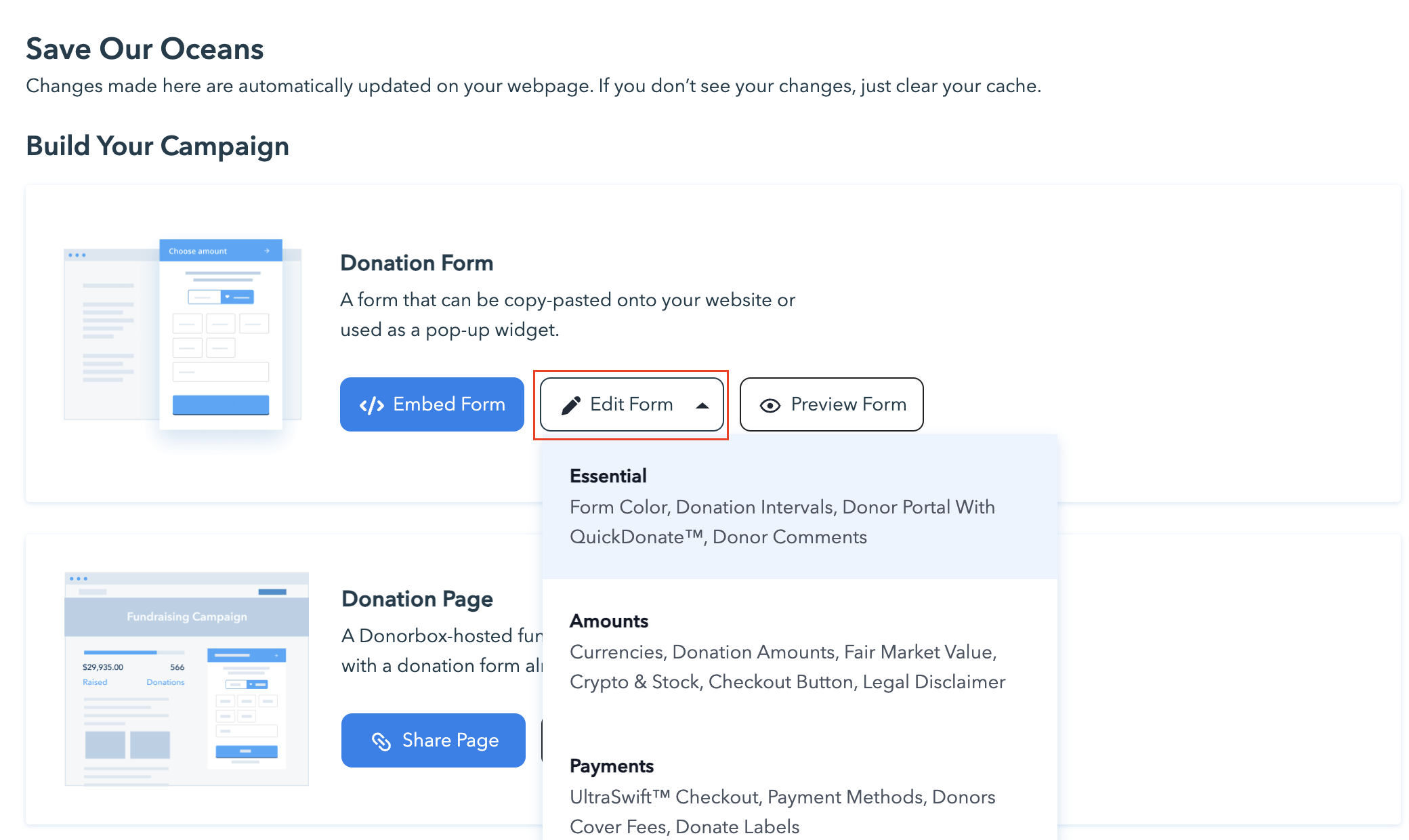
Step 3
Once you’re in your donation form editor, scroll down in the panel on the left side of your screen. There, you’ll see a checkbox to enable your donor wall.

Now you’ll see the option to leave a comment on your donation form.
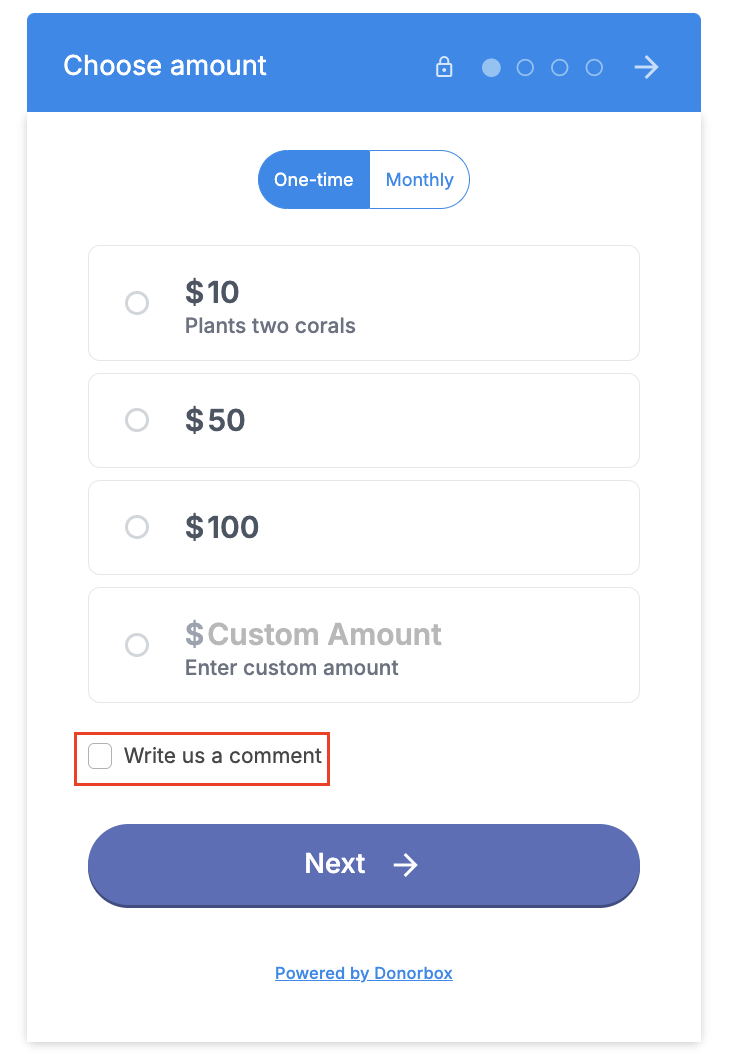
Step 3
If you’d like your donor wall to appear on your Donorbox-hosted donation page, you can easily enable it through the donation page editor. Return to your campaign page and select “Edit Page.”
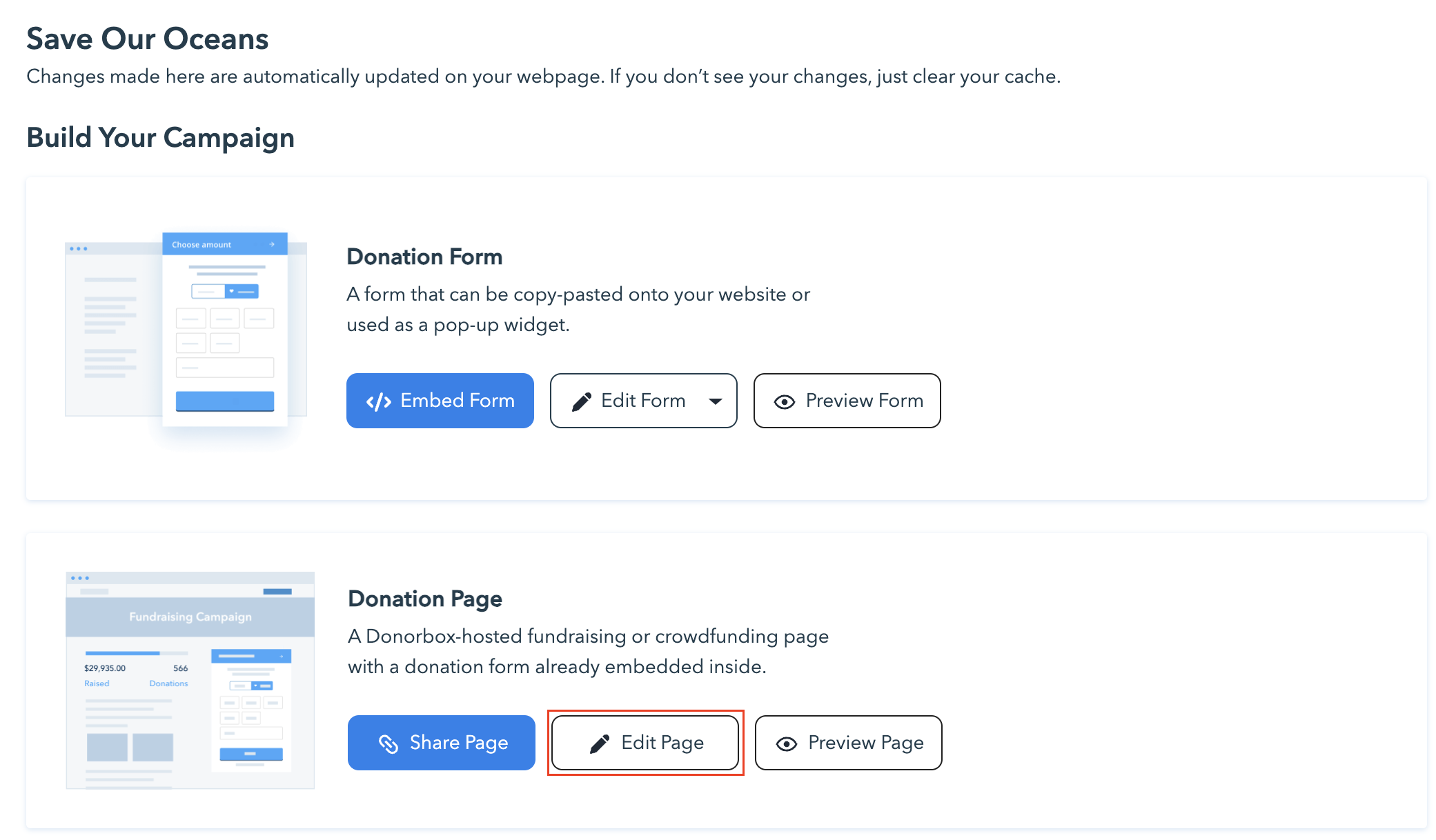
Scroll down on the panel on the left side of your screen and check the box to display a donor comment wall.

Note that the location of the donor wall on your donation page will depend on whether you’ve enabled crowdfunding or not. For a standard donation page, the donor wall sits at the bottom of the page. For a crowdfunding page, the donor wall is accessible through a tab at the top of your page.
Check out Communication Madison‘s donor wall on their crowdfunding page:
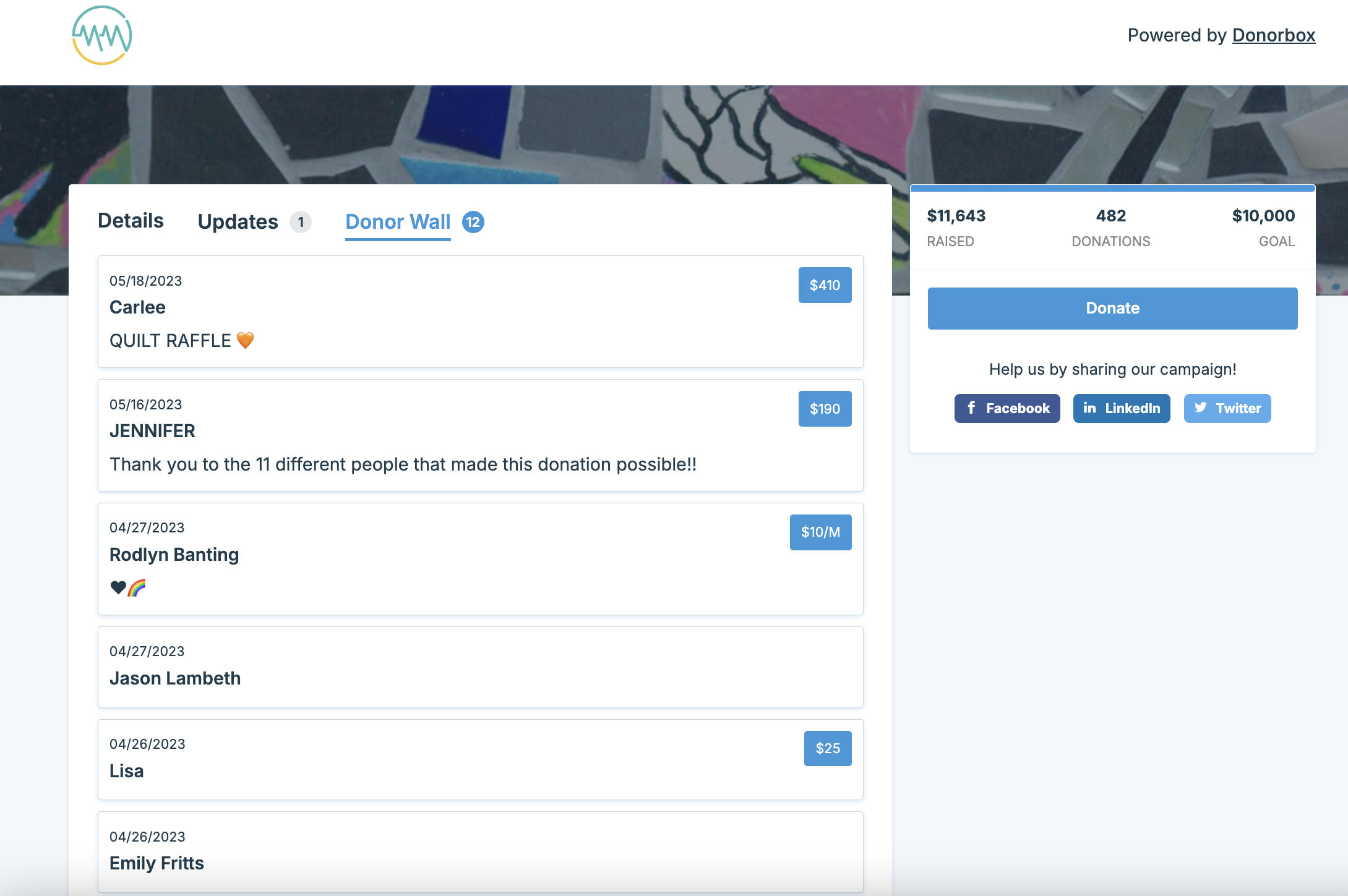
Step 4
You also have the option of embedding a donor wall on your website. To do this, go to your Campaign Launchpad.
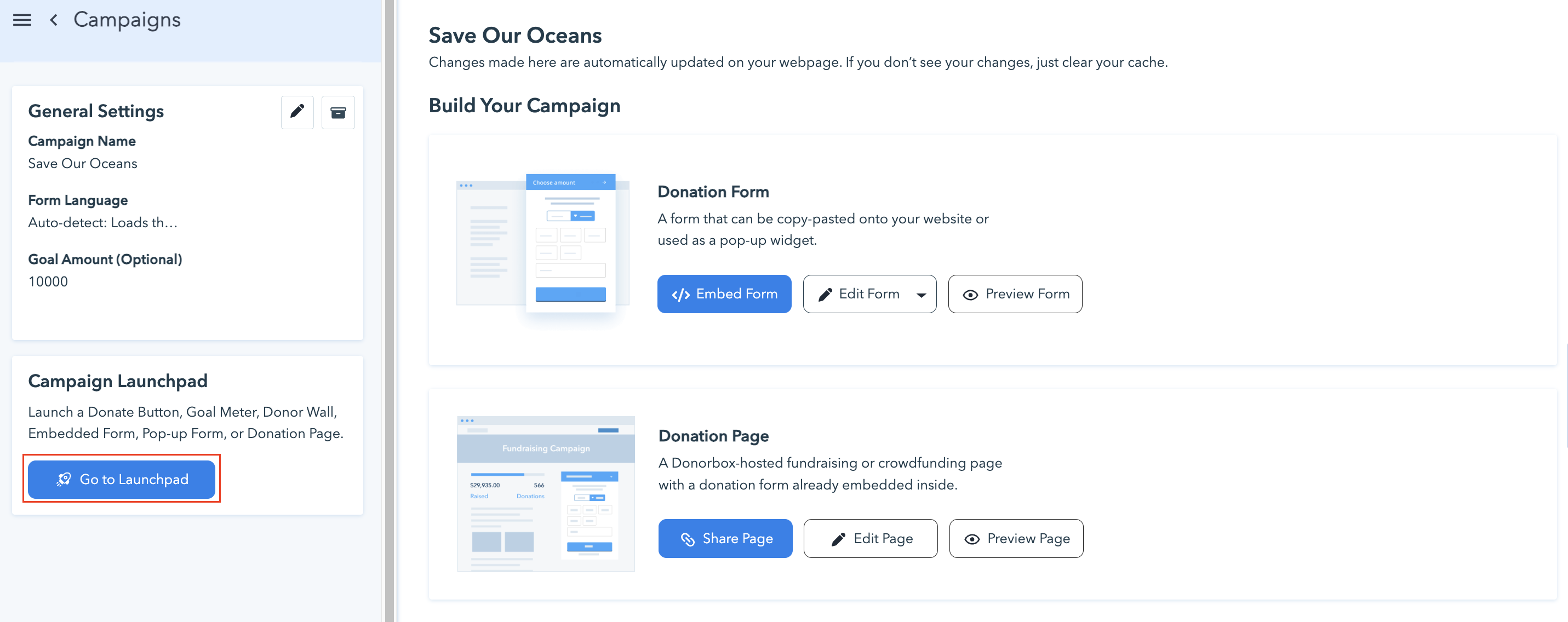
In the Donor Wall tab, customize your donate button color and copy the code. Paste this code into your webpage’s HTML where you would like your donor wall to appear.
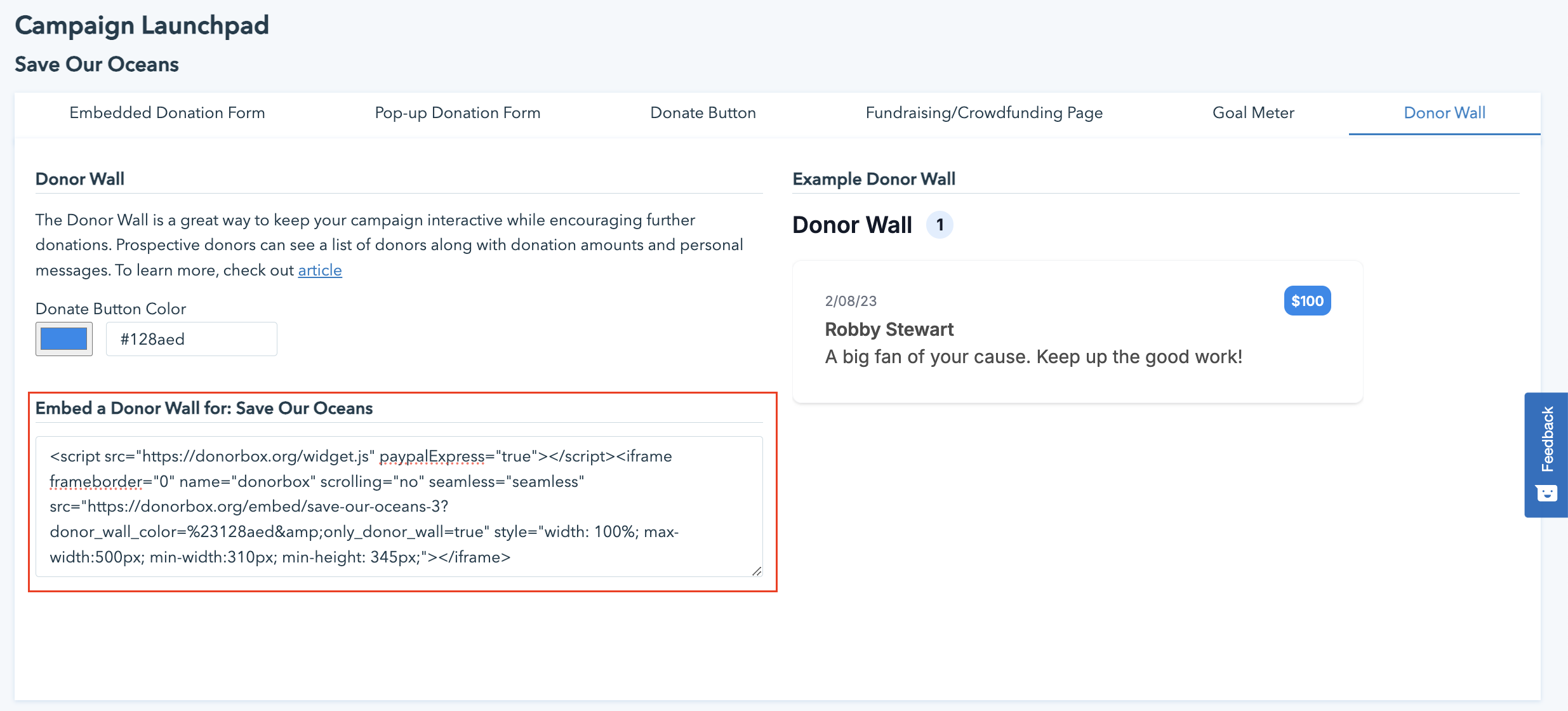
Build Your Virtual Donor Wall
BONUS: Donor Walls Design Ideas
1. Digital Donor Wall by Humber River Hospital Foundation

2. Paw Wall by the Humane Society

3. Donor wall at the Whitney Museum of American Art

4. Donor wall at Buffalo State College

Over to You
If your donors don’t feel appreciated, or their loved one is not properly memorialized in your project, they may look for other causes when they give next.
Therefore, it’s important to remember that how you choose to recognize your donors needs to fit not only the donor and their wishes, but also the culture and values of your organization.
And don’t forget that donor recognition and donor stewardship go beyond donor walls.
A key trend in recognition is a move away from static recognition to one that is active, dynamic, and focused on donor engagement and experience.
Building long-lasting relationships, making donors feel like part of the family, and showing donors the impact of their gifts should be your imperative.

